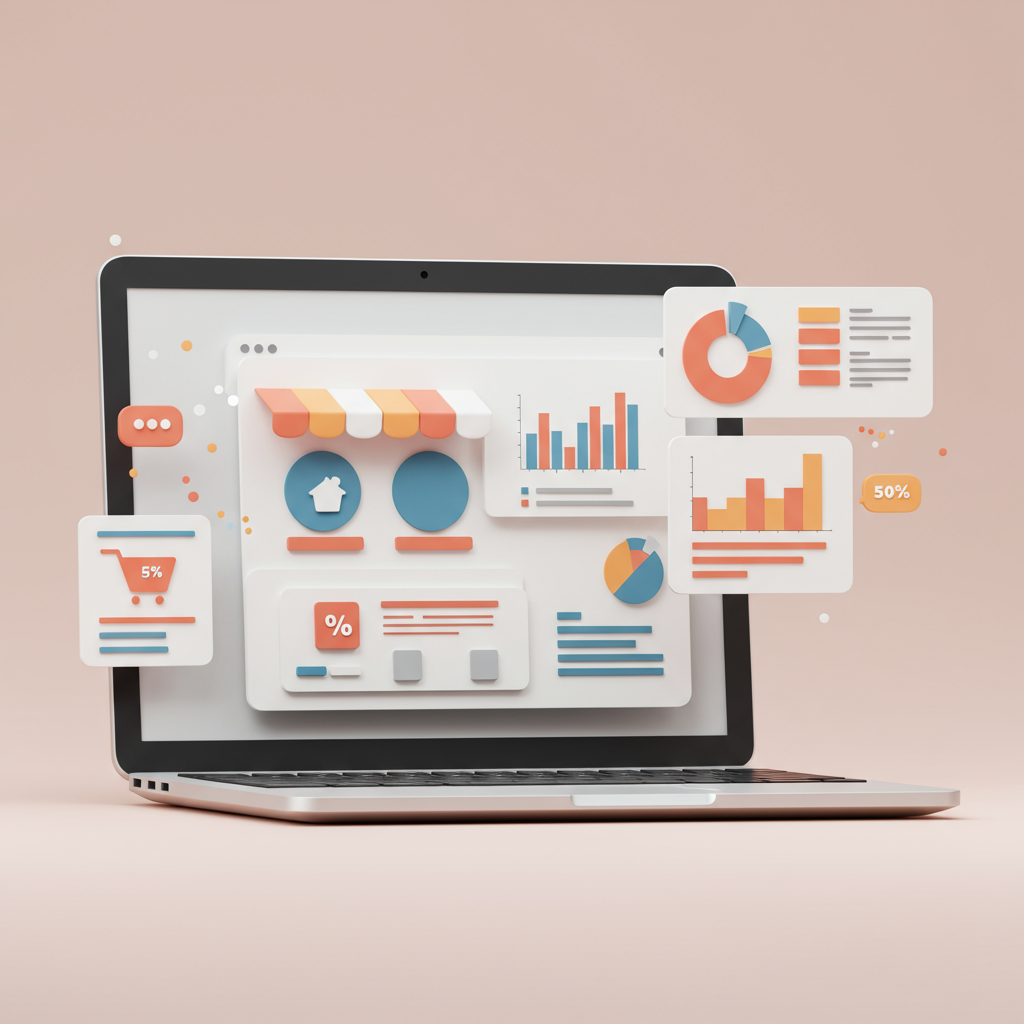Unlocking Your Store’s Full Potential: Strategies to Turn More Visitors into Paying Customers
As a Shopify merchant, you’re constantly striving to grow your business. You invest in marketing, drive traffic to your store, and curate amazing products. But have you ever wondered why some visitors browse and leave, while others click ‘Add to Cart’ and complete a purchase?
This is where Conversion Rate Optimization, or CRO, comes into play. Simply put, CRO is the systematic process of increasing the percentage of website visitors who complete a desired goal – in your case, making a purchase.
It’s not just about getting more traffic; it’s about making the most of the traffic you already have. Think of it this way: if you can convert 2% of your visitors instead of 1%, you’ve effectively doubled your sales without spending an extra dime on advertising.
I’ve seen countless Shopify stores leave money on the table by overlooking CRO. It’s a continuous journey of understanding your customers, testing hypotheses, and refining your store’s experience.
So, where do we begin? Our journey into Shopify CRO starts with understanding your audience and their behavior. This is foundational. Without knowing who you’re selling to and how they interact with your site, any optimization efforts will be shots in the dark.
Utilize Shopify’s built-in analytics, Google Analytics, and even heatmapping tools like Hotjar or Lucky Orange. These tools provide invaluable insights into where visitors click, where they scroll, and where they drop off. Are they getting stuck on product pages? Is your checkout process too long?
Next, let’s talk about speed. In today’s fast-paced digital world, patience is a rare commodity. A slow-loading website is a conversion killer. I’ve seen studies showing that even a one-second delay in page response can result in a 7% reduction in conversions.
Optimize your images by compressing them without sacrificing quality. Use modern image formats like WebP. Minimize the number of apps you use, as many can add significant load time. Regularly audit your theme and code for inefficiencies.
Mobile responsiveness is non-negotiable. A significant portion of your traffic, especially for Shopify stores, comes from mobile devices. Your store must look and function flawlessly on smartphones and tablets. Test it yourself on various devices.
Navigation and search functionality are crucial for user experience. Make it incredibly easy for visitors to find what they’re looking for. Clear menus, logical categories, and a prominent, efficient search bar are essential.
Now, let’s dive into product pages, the heart of your Shopify store. High-quality product images and videos are paramount. Showcase your products from multiple angles, in use, and with lifestyle shots. Visuals sell.
Your product descriptions need to be compelling. Don’t just list features; highlight benefits. How will this product solve a problem or improve your customer’s life? Use storytelling, address pain points, and create desire.
Strong Calls to Action (CTAs) are vital. Buttons like ‘Add to Cart,’ ‘Buy Now,’ or ‘Shop Now’ should be prominent, clear, and use action-oriented language. Test different colors, sizes, and placements.
Building trust is fundamental for online sales. Display customer reviews and testimonials prominently. Social proof is incredibly powerful. Integrate review apps and encourage customers to share their experiences.
Security badges, clear return policies, and accessible customer support information (like a live chat widget or phone number) all contribute to building confidence. People buy from brands they trust.
The checkout process is often where many conversions are lost. Simplify it as much as possible. Offer guest checkout options. Minimize the number of steps and form fields. Pre-fill information where possible.
Consider offering multiple payment options, including popular ones like PayPal, Apple Pay, and Shop Pay, which can significantly speed up the checkout process for returning customers.
Abandoned cart recovery is a low-hanging fruit for CRO. Set up automated email sequences to remind customers about items left in their cart. Offer a small incentive, like free shipping, if appropriate.
Personalization can significantly boost conversions. Recommend products based on browsing history or past purchases. Use customer data to tailor the shopping experience, making it feel more relevant.
A/B testing is your best friend in CRO. Don’t guess; test! Test different headlines, product images, CTA button colors, page layouts, and even pricing strategies. Tools like Shopify’s native A/B testing apps or external platforms can help.
Upselling and cross-selling are powerful techniques to increase average order value (AOV). Suggest complementary products at checkout or on product pages. ‘Customers who bought this also bought…’ is a classic for a reason.
Ensure your customer support is easily accessible and responsive. A quick answer to a pre-purchase question can be the difference between a sale and a lost opportunity. Live chat is particularly effective.
Clearly communicate your shipping policies and costs upfront. Hidden fees or unexpected shipping costs at checkout are major reasons for cart abandonment. Transparency builds trust.
Leverage urgency and scarcity where appropriate and authentic. Limited-time offers or low stock alerts can encourage immediate action, but use them sparingly to maintain credibility.
Consider implementing exit-intent pop-ups to capture email addresses or offer a last-minute discount to visitors who are about to leave your site. These can be highly effective for lead generation and conversion.
Post-purchase follow-up is also part of the CRO ecosystem. A positive post-purchase experience encourages repeat business and word-of-mouth referrals, which are the ultimate conversions.
Remember, CRO is not a one-time fix; it’s an ongoing process. Continuously monitor your analytics, gather feedback, and run new tests. The market, your customers, and your products are always evolving.
What do you think about this article? Are there any specific CRO tactics you’ve found particularly effective for your Shopify store?
By systematically applying these conversion rate optimization strategies, you’ll not only see an increase in your sales but also gain a deeper understanding of your customers and build a more robust, profitable Shopify business. It’s about working smarter, not just harder.






